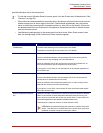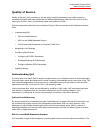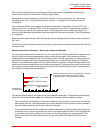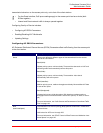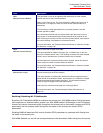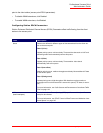
Professional Access Point
Administrator Guide
Quality of Service - 143
Quality of Service
Quality of Service (QoS) provides you with the ability to specify parameters on multiple queues for
increased throughput and better performance of differentiated wireless traffic like Voice-over-IP (VoIP);
other types of audio, video, and streaming media; and traditional IP data.
The following sections describe how to configure Quality of Service queues on the Professional Access
Point:
• Understanding QoS
• QoS and Load Balancing
• 802.11e and WMM Standards Support
• QoS Queues and Parameters to Coordinate Traffic Flow
• Navigating to QoS Settings
• Configuring QoS Queues
• Configuring AP EDCA Parameters
• Enabling/Disabling Wi-Fi Multimedia
• Configuring Station EDCA Parameters
• Updating Settings
Understanding QoS
A primary factor that affects QoS is network congestion due to an increased number of clients attempting
to access the air waves and higher traffic volume competing for bandwidth during a busy time of day. The
most noticeable degradation in service on a busy, overloaded network will be evident in time-sensitive
applications like video, Voice-over-IP (VoIP), and streaming media.
Unlike typical data files, which are less affected by variability in QoS, video, VoIP and streaming media
must be sent in a specific order at a consistent rate and with minimum delay between Packet
transmissions. If the quality of service is compromised, the audio or video will be distorted.
QoS and Load Balancing
By using a combination of load balancing (see “Load Balancing” on page 139) and QoS techniques, you
can provide a high quality of service for time-sensitive applications, even on a busy network. Load
balancing is a way of better distributing the traffic volume across access points. QoS is a means of
allocating bandwidth and network access based on transmission priorities for different types of wireless
traffic within a single access point.
802.11e and WMM Standards Support
QoS describes a range of technologies for controlling data streams on shared network connections. The









